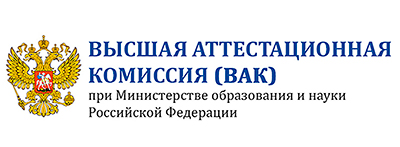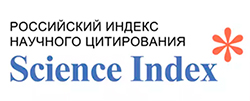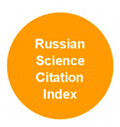Особенности исследований сексуальной ориентации: демографические характеристики российских гомосексуалов
Аннотация
В демографии как один из видов демографического поведения рассматривается сексуальное. Сексуальная ориентация – наиболее широкий термин, предполагающий несколько концепций, от которых зависит дизайн исследования. Сексуальное поведение, сексуальная идентичность и сексуальное влечение требуют различных исследовательских подходов и способов измерения.
В настоящей статье предложен обзор современных направлений в концептуализации и измерении сексуальной ориентации, а также приведено описание демографических данных, полученных в ходе опроса российских гомосексуалов (n=390).
В исследованиях сексуальности в социальных науках можно выделить 3 основных подхода: эссенциалистский, конструтивисткий и квир-подход. Они различаются пониманием истоков (гомо)сексуальности и трактовками ориентации (как идентичности, поведения или влечения). В статье предлагаются варианты формулировок вопросов для измерения сексуальной ориентации в рамках трёх подходов, а также обзор методологических ограничений – проблемы выборки и определения генеральной совокупности.
Мы приводим результаты общероссийского ЛГБТ-опроса и даём описание данных о российских гомосексуалах (геях и лесбиянках). Полученные данные позволяют охарактеризовать возраст осознания и принятия сексуальной ориентации, возраст сексуального дебюта, опыт каминг-аута родственникам, друзьям и коллегам, отношения с родственниками, опыт насилия и дискриминации, доверие органам власти.
Скачивания
Литература
Astrelin A. (2020). Trends in morbidity, prevalence and mortality from HIV infection and tuberculosis in the regions of Russia in the XXI century. Demographic Review, 7(4), 82-107. (In Russ.).
Ayoub P. (2016). When States Come Out: Europe's Sexual Minorities and the Politics of Visibility. Cambridge: Cambridge University Press.
Ball C.A. (2001). Essentialism and Universalism in Gay Rights Philosophy: Liberalism Meets Queer Theory. Law & Social Inquiry, 26(1), 271-293.
Bartle Ch. (2015). Gay/Queer Dynamics and the Question of Sexual History and Identity. Journal of Homosexuality, 62, 4, 531-569.
Baumle A.K., Compton D.R., Poston D.L. (2009). Same-sex partners: The social demography of sexual orientation. Albany: State University of New York Press.
Baumle A.K., Poston D.L. (2011). The economic cost of being homosexual: A multilevel analysis. Social Forces, 89, 1005–1031.
Baumle A.K. (2013). Introduction: The Demography of Sexuality. In Baumle A. (Ed.), International Handbook on the Demography of Sexuality. International Handbooks of Population, vol 5. Springer, Dordrecht.
Black D., Gates G., Sanders S., Taylor L. (2000). Demographics of the gay and lesbian population in the United States: Evidence from available systematic data sources. Demography, 37, 139–154.
Blair J. (1999). A probability sample of gay urban males: The tale of two-phase adaptive sampling. Journal of Sex Research, 36, 39–44.
Blanchard R. (2018). Response to Commentaries: Meta-Analysis of Probability Samples and Other New Evidence. Archives of Sexual Behavior, 47(1), 49–57.
Butler J. (1997). The Psychic Life of Power: Theories in Subjection. Stanford, CA: Stanford University Press.
Butler J. (2006). Gender Trouble: Feminism and the Subversion of Identity. New York: Routledge Classics.
Cass V.C. (1984). Homosexual Identity Formation: Testing a Theoretical Model. The Journal of Sex Research, 20(2), 143-167.
Churilova E, Chumarina V. (2014). Nonmarital fertility and premarital conceptions in Russia: parents’ deliberate decision? Voprosy statistiki, 7, 43-49. (In Russ.)
Crawley S.L., Broad K.L. (2008). The Construction of Sex and Sexualities. In J.A. Holstein, J.F. Gubrium (Eds), Handbook of Constructionist Research (pp. 545-566). New York: The Guilford Press.
Demedetskaya Y., Denisov B., Lapitskaya A. (2019). HIV in trans*population: local case study. Demographic Review, 6(3), 85-97. (In Russ.).
Diamond M. (1993). Homosexuality and bisexuality in different populations. Archives of Sexual Behavior, 22, 291–310.
Drucker D.J. (2010). Male Sexuality and Alfred Kinsey's 0–6 Scale: Toward “A Sound Understanding of the Realities of Sex”. Journal of Homosexuality, 57:9, 1105-1123.
Durso L.E., Gates G.J. (2013). Best Practices: Collecting and Analyzing Data on Sexual Minorities. In A. Baumle (Ed.), International Handbook on the Demography of Sexuality. International Handbooks of Population, vol 5. Springer, Dordrecht.
Eliason M.J., Schope R. (2007). Shifting sands or solid foundation? Lesbian, gay, bisexual, and transgender identity formation. In I.H. Meyer, M.E. Northridge (Eds.), The health of sexual minorities: Public health perspectives on lesbian, gay, bisexual and transgender populations (pp. 3–26). New York: Springer.
Fenton K.A., Johnson A.M., McManus S., Erens B. (2001). Measuring sexual behavior: Methodological challenges in survey research. Sexually Transmitted Infections, 77, 84–92.
Festy P. (2006). Legal recognition of same-sex couples in Europe. Population, 61, 417–453.
Fuko M. (1996). Volya k istine: po tu storonu znaniya, vlasti i seksual’nosti [The Will to Truth: beyond Knowledge, Power and sexuality]. Moscow: Kastal’. (In Russ.).
Gradinari I. (Ed.) (2015). Tekhnika "kosogo vzglyada". Kritika geteronormativnogo poryadka [The technique of "oblique gaze". Criticism of the heteronormative order]. Izdatel’stvo Instituta Gaydara. (In Russ.).
Grov C., Parsons J.T., Bimbi D.S. (2010). The Association Between Penis Size and Sexual Health Among Men Who Have Sex with Men. Archives of Sexual Behavior, 39, 788–797.
Gudkova T. (2019). Fertility intentions in Russia: motivation and constraints. Demographic Review, 6(4), 83-103. (In Russ.).
Gurko T.A. (2008). Brak i roditel’stvo v Rossii [Marriage and parenthood in Russia]. Moscow: Institut sotsiologii RAN. (In Russ.).
Halwani R. (1998). Essentialism, Social Constructionism, and the History of Homosexuality. Journal of Homosexuality, 35(1), 25-51.
Hart T.A., Wolitski R.J., Purcell D.W., Gòmez C., Halkitis P., The Seropositive Urban Men’s Study Team (2003). Sexual behavior among HIV-positive men who have sex with men: What’s in a label? Journal of Sex Research, 40, 179–188
Herek G.M., Glunt E.K. (1993). Interpersonal contact and heterosexuals' attitudes toward gay men: Results from a national survey. Journal of Sex Research, 30(3), 239-244.
Hilton A.N., Szymanski D.M. (2011). Family Dynamics and Changes in Sibling of Origin Relationship After Lesbian and Gay Sexual Orientation Disclosure. Contemporary Family Therapy, 33, 291.
Isupova O. (2020). Population and family policy in different countries: conceptual approaches and practices. Demographic Review, 7(3), 51-83. (In Russ.).
Kon I. (2010). Klubnichka na berezke. Seksual’naya kul’tura v Rossii [Strawberry on a birch tree. Sexual culture in Russia]. Moscow: Vremya. (In Russ.).
Kondakov A. (2014). Na pereput’ye: metodologiya, teoriya i praktika LGBT i kvir-issledovaniy [At the crossroads: methodology, theory and practice of LGBT and Queer Studies]. SPb.: Tsentr nezavisimykh sotsiologicheskikh issledovaniy. (In Russ.).
Laumann E.O., Gagnon J.H., Michael R.T., Michaels S. (1994). The social organization of sexuality: Sexual practices in the U.S. Chicago: University of Chicago Press.
Makarychev A., Medvedev S. (2015). Biopolitics and Power in Putin’s Russia. Problems of Post-Communism, 62 (1): 45–54
Martin L. (2015). The Family in Flux: Changing Sexual and Reproductive Practices. In DeLamater J., Plante R. (Eds), Handbook of the Sociology of Sexualities. Handbooks of Sociology and Social Research. Springer, Cham.
Mavletova A.M. (2012). Mobil’nyye veb-oprosy [Mobile web surveys]. In Shashina A.V., Devyatko I.F., Davydova S.G. (Red.), Onlayn issledovaniya v Rossii 3.0.Moscow [Online research in Russia 3.0.]: Izdatel’skiy dom «Kodeks». (In Russ.).
Meyer I.H., Northridge M.E. (2007). The health of sexual minorities: Public health perspectives on lesbian, gay, bisexual and transgender populations. New York: Springer.
Meyer I.H., Wilson P.A. (2009). Sampling lesbian, gay, and bisexual populations. Journal of Counseling Psychology, 56(1), 23–31.
Milton H.L., MacDonald G.J. (1984). Homosexual Identity Formation as a Developmental Process. Journal of Homosexuality, 9(2-3), 91–104.
Mitrofanova E. (2020). (No)time to grow up: changing ages of debut biographical events in Russia. Demographic Review, 7(4), 36-61. (In Russ.).
Nartova N. (2007). “Russian Love”, or What of Lesbian Studies in Russia? Journal of Lesbian Studies, 11 (3–4), 313–320.
Osipova I. (2020). Reproductive attitudes of Russians and how they regard government measures to support fertility. Demographic Review, 7(2), 97-120. (In Russ.).
Pachankis J.E., Buttenwieser I.G., Bernstein L.B. et al. (2013). A Longitudinal, Mixed Methods Study of Sexual Position Identity, Behavior, and Fantasies Among Young Sexual Minority Men. Archives of Sexual Behavior, 42, 1241–1253.
Poston D., Chang Y.T. (2015). The Conceptualization and Measurement of the Homosexual, Heterosexual, and Bisexual Populations in the United States. In: Hoque M., B. Potter L. (eds) Emerging Techniques in Applied Demography. Applied Demography Series, vol 4. Springer, Dordrecht.
Riabov O., Riabova T. (2014). The Remasculinization of Russia? Problems of Post-Communism, 61 (2), 23–35.
Saewyc E.M., Bauer G.R., Skay C.L., Bearinger L.H., Resnick M.D., Reis E., Murphy A. (2004). Measuring sexual orientation in adolescent health surveys: Evaluation of eight school-based surveys. Journal of Adolescent Health, 35(4), 345.E1-345.E15.
Sell R. (2007). Defining and measuring sexual orientation for research. In I.H. Meyer, M. E. Northridge (Eds.), The health of sexual minorities: Public health perspectives on lesbian, gay, bisexual and transgender populations (pp. 355–374). New York: Springer.
Singer B., Deschamps D. (2017). LGBTQ Stats: Lesbian, Gay, Bisexual, Transgender, and Queer People by the Numbers. NY: The New Press.
Stella F. (2015). Lesbian Lives in Soviet and Post-Soviet Russia. Post/Socialism and Gender Sexualities. Basingstoke: Palgrave Macmillan.
Tolkachev D.S., Vasileva V.M. (2019). Social landscapes: A conservative turn for Russian gender and sexuality education. In T. Jones, L. Coll, L. van Leent, Y. Taylor (Eds.), Uplifting Gender and Sexuality Education Research. Palgrave Studies in Gender and Education. Cham: Palgrave Macmillan.
Vrangalova Z., Savin-Williams R.C. (2012). Mostly Heterosexual and Mostly Gay/Lesbian: Evidence for New Sexual Orientation Identities. Archives of Sexual Behavior, 41, 85–101.
Wampold C.H. (2018). Volvivity, Femininity, Fraternity: Breaching the Sexual Orientation Fortress. Archives of Sexual Behavior, 47(1), 43–46.
Wei C., Raymond H.F. (2011). Preference for and Maintenance of Anal Sex Roles Among Men Who Have Sex with Men: Sociodemographic and Behavioral Correlates. Archives of Sexual Behavior, 40, 829–834.
Wilkinson C. (2014). Putting ‘traditional values’ into practice: The rise and contestation of anti-homopropaganda laws in Russia. Journal of Human Rights, 13(3), 363–379.
Zdravomyslova E., Temkina A. (2012). The Crisis of Masculinity in Late Soviet Discourse. Russian Studies in History, 51 (2), 13–34.
























